Automating Control Panel ManufacturingPatrick Boyer, Komax Corp.; Van Miller, Kiesling USA; and Christine Knapik, ePlan Software & Services
Today the manufacturing of control panels is traditionally a labor-intensive process with few options for process automation. Most operations are done manually including engineering, laying out, punching and drilling the back panels and enclosures; cutting to length, stripping, crimping, and labeling the wires; installing the components and wiring the panels.
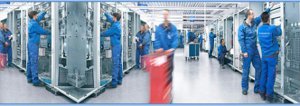
Existing engineering documentation is often manually modified for new projects, resulting in long quoting cycles. Often revisions occur during the build cycle and all panel documentation such as drawings, schematics, bill of material, 2D and/or 3D layouts, in addition to a wide variety of manufacturing lists and instructions, must be simultaneously and manually revised.
Yes, many control panel manufacturers today use a variety of software in order to produce these outputs but they rarely have true integration to one another. For example, the schematics may be drawn in a simple CAD system, the bill of material resides in a standard Excel or .csv type spreadsheet, the 3D representation is drawn in a product such as Solid Works, while the component pricing resides in an ERP system that has little or no connectivity to the engineering system. It then becomes difficult to maintain revision control between all engineering documents as changes are made to the product. The results can range from a large amount of time spent maintaining the project to quality errors in the finished product.
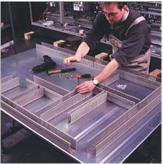
The preparation of the controls enclosure and back panels consist of:
laying out, by hand, all components on the back panel; marking the locations and then center-punching them; manually drilling and slowly tapping all required holes, with manual tool and cutting oil, hoping for straight threads; metal must be measured, marked, and taped before any cutout process by punching or sawing can even begin.
All these steps represent a large amount of labor for the manufacturers. Of course they have the option of off-the-shelf enclosures, but these can be expensive; thus, mistakes and rework can result in unplanned costs.
Traditionally, for wiring the panels and enclosures, wiring assemblers are in front of the work with several small wire spools or pre-cut wire, lying unorganized in totes; they also have stacks of labels or a hand label unit, loose pieces of terminals and ferrules, hand stripping and crimping tools. They have to go through the following steps for each wire:
reading and marking the schematics for the wire they will assemble; the possibility of missing lines on the schematic is high; pulling the wire from one of the reels, stripping to approximate length, crimping with hopefully the correct hand crimper, and labeling one end; inserting that end, routing the wire, and repeating the above for the second end.
As you can imagine, after the mechanical assembly is complete, the above steps involved in wiring the control panel account for the largest share of labor hours and present the manufacturer with thousands of opportunities for error.
Solutions Available on the Market Today
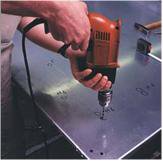
On the engineering side, software such as the ECAD P8 from ePlan Software and Service, in combination with Pro Panel 3D control panel design software, allows the user to automate many of the mundane tasks involved in control panel design and also produce accurate data for ensuing manufacturing processes, so engineers can use their time to engineer. The database architecture of this type of system creates an engineering environment in which all outputs of the controls project are simply representations of the same database. This ensures that any changes made are reflected consistently in all outputs, even when multiple engineers are working on the same project. Utilization of such software improves continuity in the process chain, consistency in data management, synchronization, and is the ideal support of the engineering workflows.
For preparation of the control enclosures and back panels, CNC machining centers such as Perforex technology machine, developed by Kiesling Maschinentechnik, are designed for the automated modification of off-the-shelf industrial enclosures as well as drilling and tapping the associated component mounting panel. The Perforex system is designed to work on both flat workpieces like mounting panels, doors, and modular surfaces, as well as all surfaces of 3 dimensional welded enclosure bodies.
These special CNC centers reduce by up to 30% the total costs on each control panel, even more so when it comes to single-piece production. They also improve quality with no rework of expensive painted and stainless steel enclosures; the automated technology drives process standardization on the shop floor with faster lead-times in mechanical prefabrication, meaning faster turnaround overall. Personnel are then available for value-added work such as wiring and testing, in addition to improved job satisfaction and greater motivation.
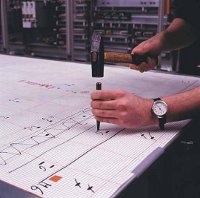
For wire preparation, Komax Wire offers a wide range of machines from measuring the wire to length, cutting, and stripping with the Kappa line to the advanced Zeta systems for processing wire kits suitable for panel wiring. The Zeta can process up to 36 different wires and can be equipped with up to 8 different processing stations and up to 2 inkjet printers; it selects the wires automatically, cuts them to length, inkjet marks them, and terminates them. Termination possibilities can include insulated ferrules or compacting the wire ends with ultrasonic or resistance welding.
Chain and normal bundle can be defined for each wire in the same sequence. The wires for back panels or enclosures can be produced and kitted in the ideal order. The optimized order is maintained until the wires are installed in the cabinet, meaning the cabinet is wired quickly and orderly with missing wires a thing of the past. Components with different terminal contacts such as spring-loaded, push-in, or conventional terminals can have one or both ends automatically inserted in the same sequence directly at the machine while at the same time, chain bundling non-inserted wires.
The result: a reduction of the logistics workload between the part lists and the panel assembly. These eliminated logistical steps consist of:
preparing cutting lists from the parts lists; preparing wires and terminals according to the cutting list; producing single leads with an automatic cut/strip or automatic crimping machine; stocking the produced leads; selecting specific leads from stock.
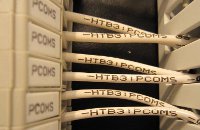
To provide customers with not only individual technologies but a complete solution for control panel manufacturing, ePlan, Kiesling, and Komax are working together. Without further effort, Pro Panel takes the layout design data and exports the information to Kiesling Perforex system and to the Komax Zeta automatic wire harness processing machine. In 3D environment, you can lay out your design panel, align and position components exactly, follow spacing requirements, and automatically calculate wire lengths.
As with any automation technology, correct data is extremely important; there is no longer the opportunity for manufacturing personnel to make on-the-fly corrections to the engineering layouts due to “tribal knowledge.”
Benefits include:
time savings between 30% to 60% overall; material cost reduction; increase in quality; faster turnaround; production floor load leveling; production process standardization.
About the Authors: Van Miller is the North American Sales Representative for Kiesling USA with 10 years of experience in the control panel industry. Patrick Boyer is the Harness Machine Product Manager for Komax Wire with 17 years of experience in the wire processing industry. Christine Knapik is the Director of Marketing at ePlan Software and Services.